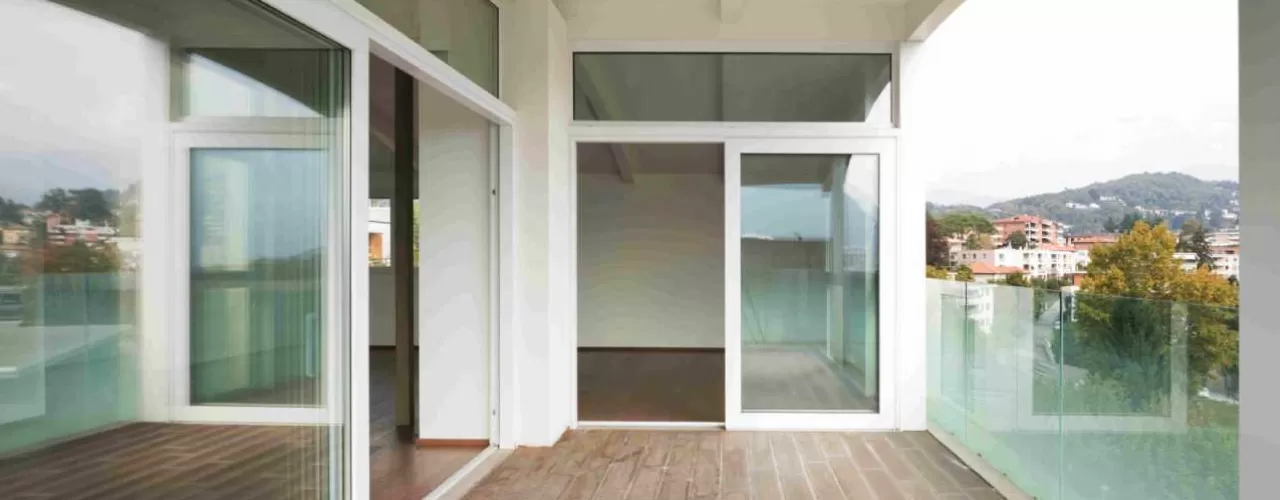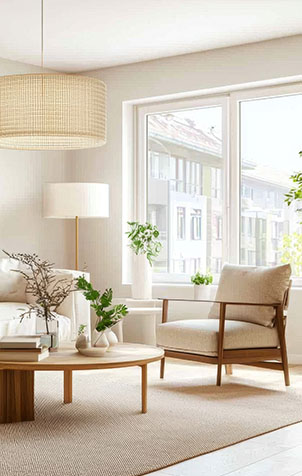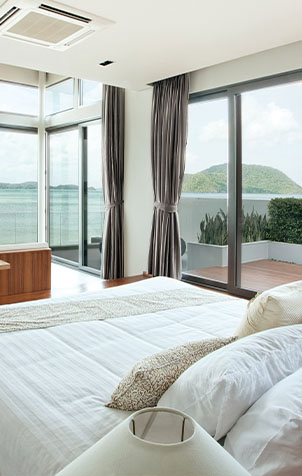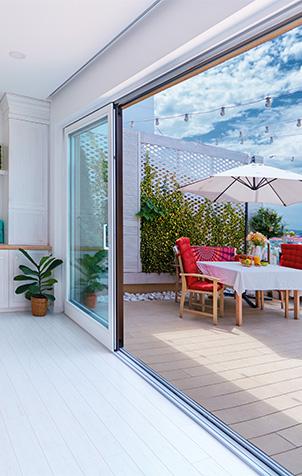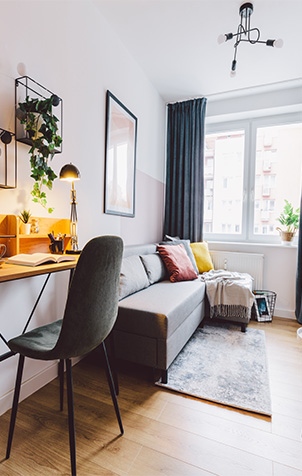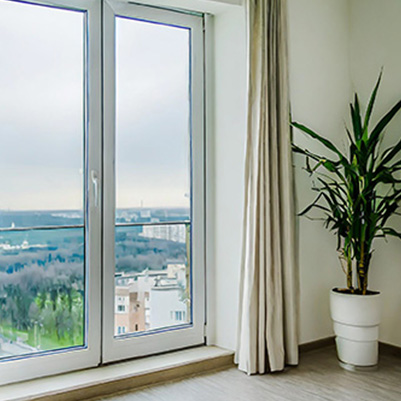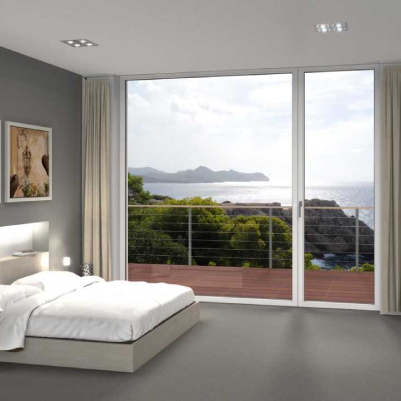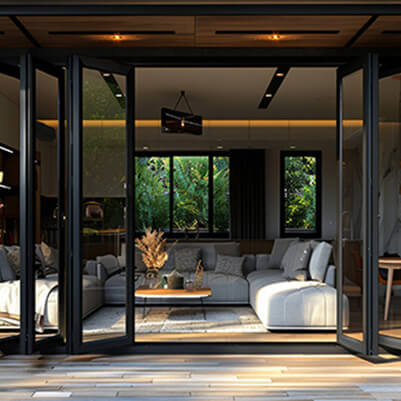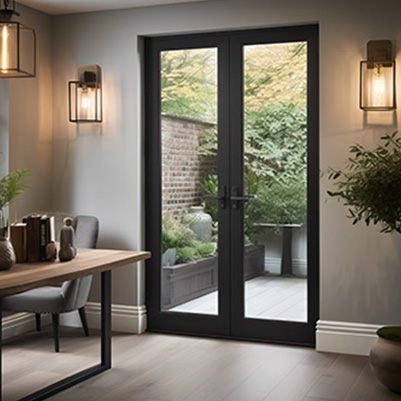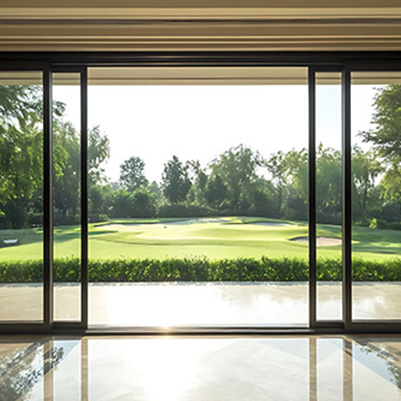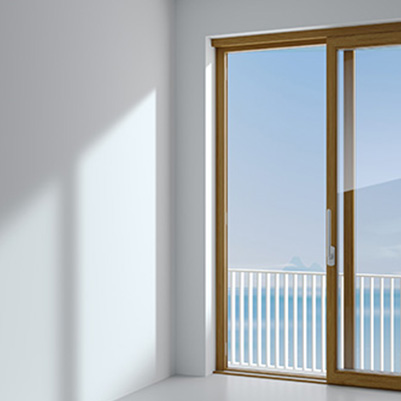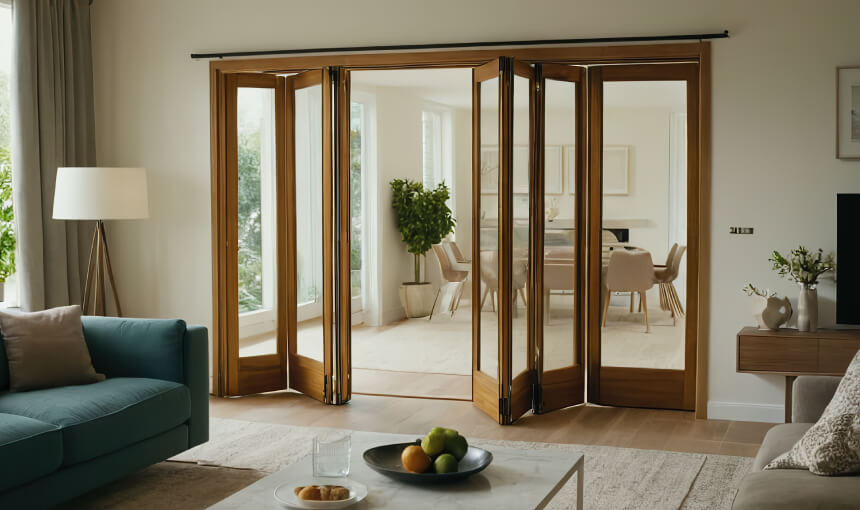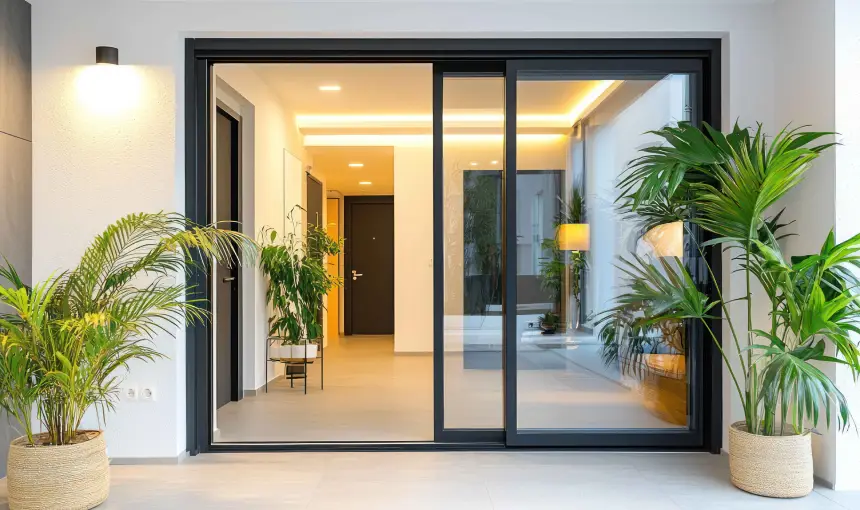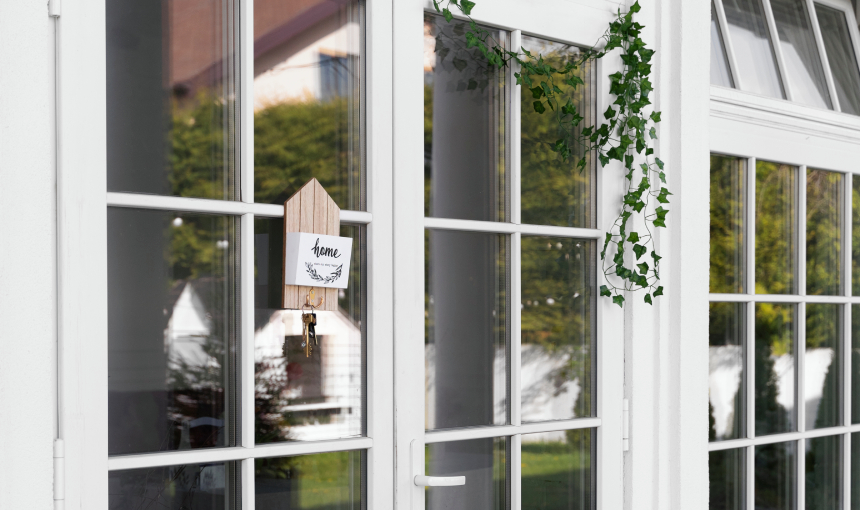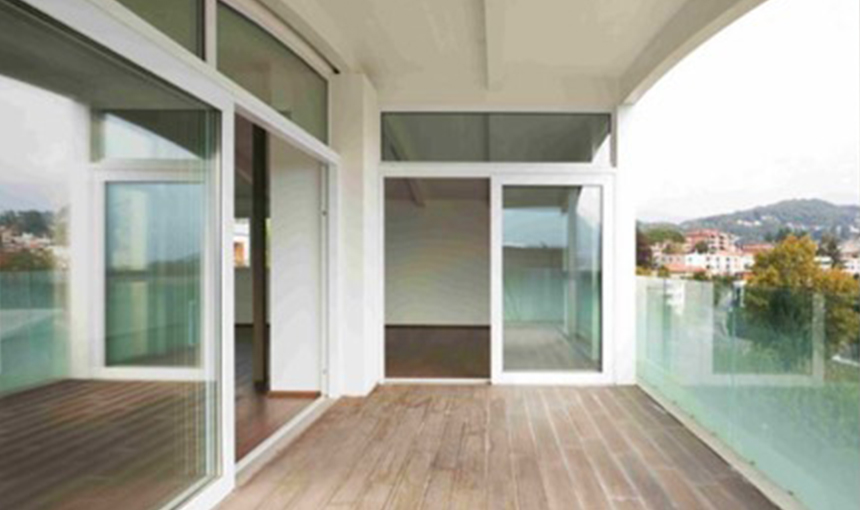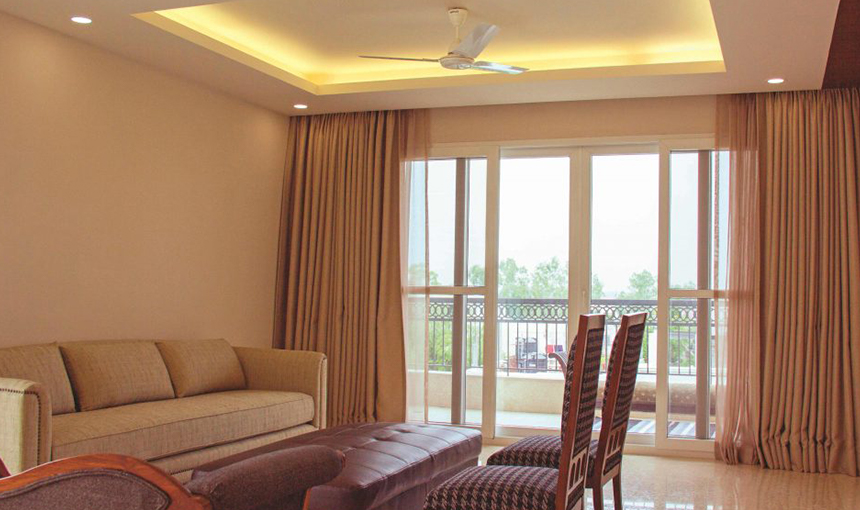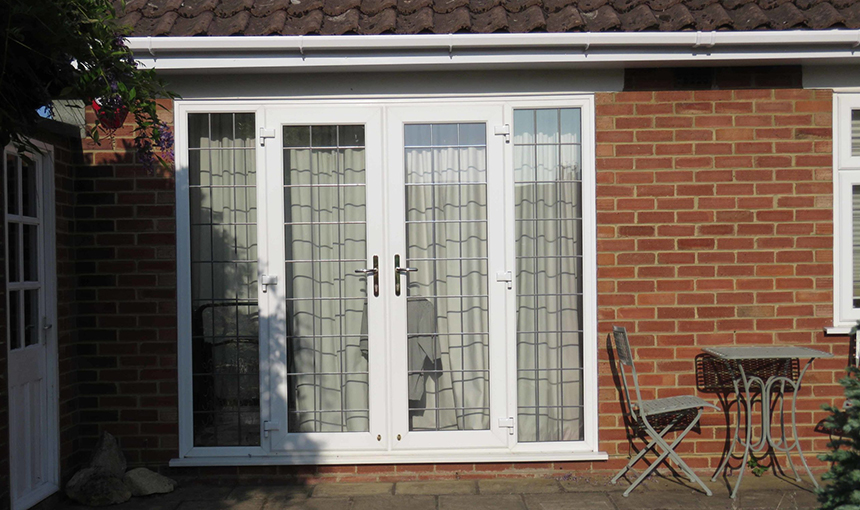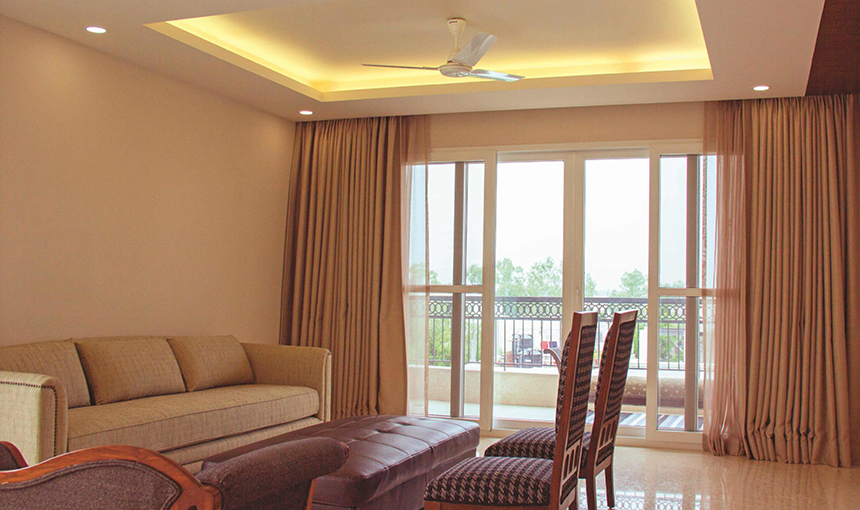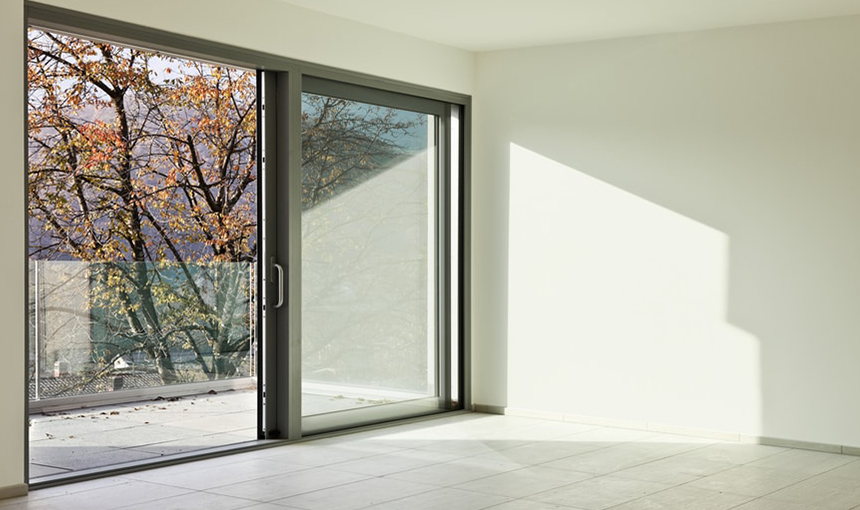Sliding doors glide smoothly along a track, offering effortless operation and space-saving design. With one or more movable panels, they provide seamless functionality without protruding inward or outward.
Key Features
Graceful Glide
Craft a fluid connection between indoor comfort and outdoor openness.
Vivid Views
Fitted with smooth-glide rollers for seamless, effortless movement.
Space Savvy
A streamlined mechanism that ensures easy and effortless opening and closing.
Elegant Fusion
Designed with a combination of fixed and movable panels, providing flexible functionality.

Unobtrusive Style
Enable expansive openings with panels that fold and stack neatly to one side.
Sunny Relief
Features multiple overlapping panels designed to optimize airflow and enhance ventilation efficiency.
Fluid Motion
Fully customizable to open inward or outward, offering flexibility to suit your space.
Floods
Floods your space with an abundance of natural light.

Technical
Information
Width:
500 - 1450mm
Height:
2000 - 2700mm
Area:
0.01 - 3.6 Sq Mtr
Weight Capacity:
120 kg
Compatible Glass Thickness:
5-24 mm
Construction Depth:
2 Track : 62mm
3 Track: 112mm
Area of Applications
Other uPVC Doors
Blog
FAQs
A uPVC sliding door is a type of door made from unplasticized polyvinyl chloride (uPVC) that slides horizontally on tracks rather than swinging open. Sliding uPVC doors are designed for space-saving solutions, it’s ideal for balconies, patios, terraces, or room dividers.
These sliding doors features durable uPVC frames that are weather-resistant, low-maintenance, and energy-efficient. Typically fitted with large glass panels to allow natural light, outdoor views, and a modern aesthetic. Can include multi-point locking systems and insulated glazing for security, noise reduction, and thermal efficiency. uPVC sliding door offers a smooth sliding operation, even for wider panels, making it practical for both residential and commercial spaces. To explore more, check out the benefits of uPVC sliding doors.
Space-Saving Design – uPVC sliding doors, slides horizontally along a track, no extra space needed for door swing.
Smooth Operation – Lightweight panels glide easily for effortless opening and closing.
Energy Efficiency – Multi-chambered uPVC frames and double/triple glazing sliding uPVC doors reduce heat loss.
Low Maintenance – Resistant to rust, rot, termites, and requires only occasional cleaning.
Enhanced Security – Multi-point locking systems provide strong protection.
Natural Light & Views – Large glass panels sliding doors made with uPVC allow maximum sunlight and outdoor visibility.
Weather Resistance – Withstands rain, dust, and wind effectively.
Versatile Aesthetics – Available in multiple colors, finishes, and glass options to match interiors.
Noise Reduction – Insulated panels of uPVC sliding doors help block external noise for a quieter indoor environment.
Cost-Effective – Generally more affordable than lift & slide or bi-fold systems while providing excellent functionality.
For a detailed breakdown, check out uPVC sliding door benefits.
Low Maintenance: uPVC sliding doors are designed to be durable and easy to care for, requiring minimal effort.
Regular Cleaning: Wipe frames and glass panels with a mild detergent and soft cloth every few months to remove dust and dirt.
Track & Roller Care: Keep sliding tracks of sliding uPVC doors clean and free of debris; apply a silicone-based lubricant occasionally for smooth operation.
Hardware Check: Inspect handles, locks, and rollers periodically to ensure they function properly.
No Painting Needed: Unlike wood, uPVC frames don’t require repainting or varnishing.
Weather Resistance: uPVC frames of uPVC sliding doors resist rot, rust, termites, and UV damage, so maintenance is mostly preventive.
Learn more about our sliding doors in our blog all you need to know about uPVC sliding doors.
Standard uPVC sliding doors offer some noise reduction thanks to their solid construction and tight seals, but they are not fully soundproof.
For areas with heavy traffic or high external noise, special acoustic sliding uPVC doors are available that significantly reduce sound transmission.
* Key Features of Acoustic uPVC Sliding Doors:
Advanced Noise Reduction: Uses sound-resistant glass and airtight seals to block external noise.
Enhanced Acoustic Technology: Active noise cancellation features improve indoor sound comfort.
Customizable Options: Available in various sizes, glass thicknesses, and finishes while providing superior sound insulation.
Width: Typically uPVC sliding doors ranges from 5 ft (1500 mm) to 12 ft (3600 mm) for single or multi-panel sliding doors.
Height: Usually between 6 ft 8 in (2030 mm) to 8 ft (2440 mm), with taller options available for custom designs.
Panels: Common configurations of sliding uPVC doors include 2-panel, 3-panel, or 4-panel sliding doors depending on the width and space requirements.
Custom Sizes: Doors can also be custom-made to fit non-standard openings while maintaining smooth operation and structural integrity.
Glass Options: Standard glass thickness ranges from 5 mm to 12 mm, with options for double or triple glazing for insulation and noise reduction.
1. Regular Cleaning of Frames:
Wipe uPVC frames of uPVC sliding doors with a soft cloth and mild detergent every few weeks.
Avoid abrasive cleaners that can scratch the surface.
2. Clean the Glass Panels:
Use a glass cleaner or vinegar-water solution for streak-free results.
Dry with a microfiber cloth to avoid water spots.
3. Maintain the Tracks and Rollers:
Remove dust, dirt, and debris from the sliding track of sliding uPVC doors regularly.
Apply a silicone-based lubricant to rollers and tracks for smooth sliding.
Check for misalignment and adjust if necessary.
4. Check Hardware and Locks:
Inspect handles, locks, and hinges of uPVC sliding doors for wear or looseness.
Tighten screws and ensure all components function properly.
5. Inspect Seals and Weatherstrips:
Ensure rubber seals or gaskets are intact and clean.
Replace damaged or worn seals to maintain energy efficiency and noise reduction.
6. Avoid Excessive Force:
Slide uPVC sliding doors gently; do not force heavy panels, as this can damage rollers or tracks.

